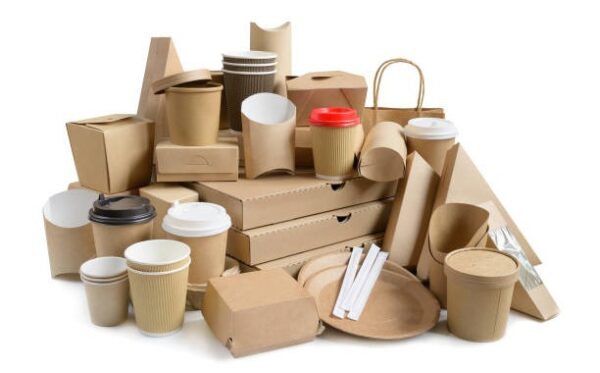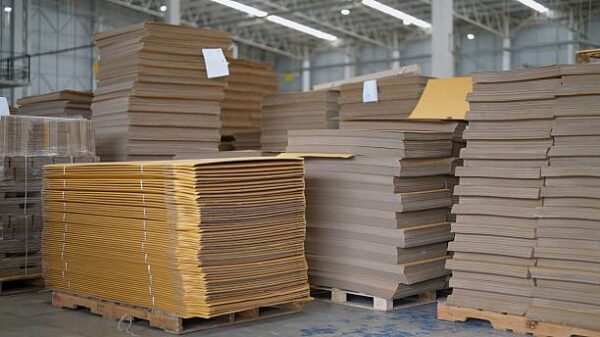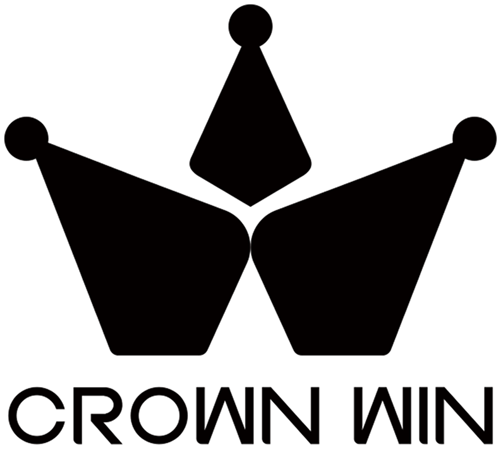Why Kraft Paper Is Revolutionizing Eco-Friendly Packaging in 2025
Understand the advantages, uses and environmental effects of kraft packaging solutions to the present day businesses.
Introduction
The packaging sector is facing an earthquake with the consumer more sensitive to the environment and the pressure these firms are under to move towards more sustainable operations. As plastic pollution gets to the point of crisis, and governments all over the world enforce tighter regulations on what is used in packaging, businesses are in a frenzy to identify the next alternative to plastic packaging that would not affect either quality or appeals. Use kraft paper packaging – an old time-tested solution that is undergoing a spectacular resurgence in the contemporary market place.

Kraft packaging provides a good solution to the current sustainability issues in addition to providing the durability and flexibility required by businesses. This all-inclusive guide will discuss all that you should know about kraft packaging, including its basic properties and more complex customization possibilities, and it will help you realize why this sustainable material becomes the preferred one among innovative brands in any industry.
What Is Kraft Paper?

The kraft paper is so named after the German word, kraft, which translates as strength – apt characterization of the highly durable material. Kraft process was invented in the 1870s and it involves processing the wood chips in a chemical solution to eliminate the lignin content and leaves the robust cellulose fibers that make kraft paper strong and supple.
The manufacturing process involves the use of wood chips which are usually the softwood trees such as pine or spruce but this time the chips are cooked in a solution of sodium hydroxide and sodium sulfide under high temperature. In this, the lignin which binds the fibers of the wood together is dissolved and the fibers of the cellulose remain intact, forming a pulp which can be molded into very strong paper.

Kraft paper is produced in a variety of different types, and each type is designed to be used in a particular way. Virgin kraft paper is a 100 per cent new wood fiber, which is the strongest and purest and therefore can be used in package food and high end product. Post-consumer waste fibers are added to recycles kraft paper, offering an even greener alternative with slightly lower strength properties. Unbleached kraft paper is used as it does not change to a brownish tint, and it is the most ecological choice, whereas bleached types are used to have a more clean look when it comes to using lighter colors or printing.
Due to the quality and grade of kraft paper, the performance as well as price are influenced to a great extent. Higher cost paper having greater fibers and manufacturing tolerance fetch high prices, yet they will provide superior strength, tear, and printability. The knowledge of these quality differences will ensure that businesses use the best quality kraft paper that meets their needs without being too specific or undermining performance.
Key Properties of Kraft Paper

The remarkable strength properties of the kraft paper make it different to the usual packaging materials. The long and interlocked cellulose fibers that were maintained in the kraft manufacturing process provide it with a high tensile strength and tear resistance. The structural integrity enables kraft paper to resist a lot of stress when handling, shipping and storage without losing package integrity.
There is a significant difference in moisture resistance of various types and treatments of kraft paper. Uncoated kraft paper has a low level of moisture protection, which is only applicable to dry goods and has to be supplemented with extra barriers in case of moisture-sensitive goods. But several types of coating and treatment can also achieve a high moisture resistance, between the light wax coating to moderate protection, and specialized barrier coating to a high-moisture environment.

The aesthetic benefits of natural texture and look of kraft paper offer specific aesthetic benefits that most brands use to position themselves as authentic and artisanal. Things such as the naturalness and environmental friendliness expressed through the characteristic brown color and somewhat rough feel, and the high-quality graphics, text, and branding elements expressed through the use of excellent printability of the material, keep the graphics, text, and branding elements clear and lively.
Kraft paper has been made of paper that outshines in almost all categories in terms of environmental consideration. It can be recycled completely through the normal paper recycle streams, biodegradable when in a natural environment, and it can be composted in home and commercial composting plants. Production of kraft paper has a much smaller carbon footprint than plastic substitutes, especially when it is made of material sourced in sustainably managed forests or is recycled.
Primary Uses of Kraft Paper

Packaging & Shipping Applications
The boom in e-commerce has seen tremendous demand in kraft paper in shipping methods. Corrugated kraft boxes offer better protection to the shipped commodities besides having high sustainability scorecard relative to their plastic counterparts. Kraft mailers have gained popularity especially in the clothing, books and lightweight, products and are considered to provide sufficient protection without causing a lot of environmental damage.
Kraft wrapping paper can be used both defensively and aesthetically, especially to companies that aim at expressing environmental responsibility. The product strength permits bundling of goods securely and its natural look supports sustainable brand communications.
Food & Beverage Industry
Food grade kraft paper has been widely used in food service market, both in the take away packaging, and wrapping sandwiches. It is safe, as it is produced naturally and can be placed into direct food contact, and specialized grease-resistant treatments allow the use of it with oily or moist foods without damage to package integrity.
Plastic bags have been ousted in most of the retail settings in favor of kraft paper bag with similar functions but with far better environmental impacts. The bags are used in grocery shopping and taking away in restaurants, and the strength properties of the bags usually outperform the expectation of the people.
Retail & Branding
High-end retailers are increasingly using kraft paper as the choice of shopping bags and product wrappings to convey the message of environmental awareness and artisanship. The superior printability of the material enables the high level of branding and still preserves the natural and real look that appeals to environmentally friendly consumers.
Kraft paper product tags and labels are durable and have a professional look as well as strengthening sustainable brand positioning. The material is welcoming to all printing methods and finishes, allowing brand creativity without restrictions of the environment.
Crafts, DIY and Home Use
Kraft paper has been adopted in the craft and DIY market due to its flexibility and ability to work. It is strong and of texture and therefore applicable in diverse projects such as gift wrapping, arts and the likes. The versatility of the material to take on a number of decorative procedures, such as stamping or painting, is what makes it especially favorable among the creative consumer base.
Industrial & Construction Applications
Kraft paper of heavy-duty is used in diverse industrial purposes such as equipment packaging and in building industries. Its strength properties render it to be used in safeguarding equipment on the way, and special types can be used to act as moisture blockers in the construction of structures.
Design & Customization Options
Modern printing technologies have made kraft paper customization possibilities extremely large. The use of digital printing allows the use of small-run custom packaging with full-color graphics whereas the traditional offset printing offers economical solutions when large volumes are required. Kraft paper, especially water-based inks can be used to provide a range of colors without compromising environmental standards.
The structural customization can be added with die-cutting with special shapes, window cut-out to display the product, and different folds with special packaging requirements. These alternatives enable brands to enjoy the benefits of having a unique packaging experience without sacrificing the sustainability benefits of kraft paper.
Surface coating and treatment can result in appearance and performance values. Matte or gloss surfaces enhance printability and appearance, whereas useful coatings may provide grease resistance, water resistance, or extra strength. Embossing and debossing develop sensory sensations that underline the premium positioning.
Kraft packaging visual effect on brand perception is difficult to overestimate. The natural look of the material instantly conveys responsibility to the environment and natural quality, which are becoming more and more desirable among the consumers belonging to the different demographic groups. These inherent associations can be taken advantage of through strategic design decisions and then building brand experiences unique to the brand.
Cost & Value Comparison
The first comparison of cost of kraft paper and alternatives demonstrates a more complicated situation that cannot be reduced to a simple price per unit of paper. Although kraft paper might translate to higher initial expenses in comparison to certain plastic substitutes, owning it can be more economical when it comes to comparing it based on such variables as user preference, legal qualification, and branding advantages.
The kraft paper benefits in terms of durability translate into fewer damage rates during the shipping and handling process, which may help to offset the increased costs of the materials by lowering the replacement and returns costs. Also, the kraft packaging weight is lower than that of some of the alternatives and this can also save on shipping costs especially on high volume shippers.
Long-term value factors comprise the rising consumer inclination in sustainable packaging, which would enable the sales growth and customer loyalty to increase by a significant margin versus the minor packaging expenses. Trends of sustainability in packaging materials are very favorable, and there is a likelihood of early implementation of kraft paper to give competitive edges as the regulations become more stringent.
There are so-called hidden costs that should be taken into account when making a decision regarding packaging. Kraft paper can be coated or treated with special properties, which can be quite costly, and the sensitivity of moisture of the material can impose extra safety precautions in specific projects. Nevertheless, such expenses have to be compared to the concealed expenses of the plastic packaging, such as possible fines by the regulatory bodies and the consumerism opposition.
Environmental Impact & Sustainability
It is possible to see the environmental benefits of kraft packaging by considering the entire lifecycle of the raw material to the disposal stage. The production of kraft paper involves the use of renewable wood used mostly in the forests that are managed sustainably and certified by such organizations as Forest Stewardship Council (FSC). The process of manufacturing, though energy-intensive, is slowly being transformed to use renewable biomass energy produced by waste products of production.
The lifecycle studies carried out over time have indicated that kraft paper has performed better against plastic substitutes in most of the environmental indicators. Although plastic is made with the help of fossil fuel feedstocks and produces long-term pollutants, kraft paper is made with renewable resources and creates completely biodegradable products. The use of kraft paper has further environmental benefits, which are based on the fact that the paper can be recycled using the current recycling system unlike plastics that have a high recycling difficulty.
Third-party certifications offer assurance of environmental assertions and assist companies to maneuver through more complicated sustainability demands. FSC certification can guarantee responsible forest management, whereas recycled content certifications can guarantee post-consumer waste. Such certifications will have marketing benefits and will guarantee real environmental benefits.
The brand image advantages of the sustainable packaging options go much further than the regulatory compliance or cost factor. It has been shown that consumers are always ready to increase their prices to companies that employ greener packaging methods, and the younger generation is especially willing to use greener packaging. This consumer attitude is correlated to competitive advantages which can cover higher costs of packaging by more sales and customer loyalty.
Challenges & Limitations
As much as kraft paper has numerous benefits, there are drawbacks in its usage that should be considered especially in some applications. The biggest limitation is moisture sensitivity since standard kraft paper does not have high resistance against water damage. Although this limitation can be overcome by using barrier coating, this would add complexity and expense and can lead to reduced recyclability.
The issue of load bearing should be taken into account when dealing with heavy products or applications that demand unusually high structural integrity. Kraft paper is considered to have the best strength to weight ratios, but the load carrying capabilities are not as great as those of certain plastic or composite materials in the most extreme uses.
Some of the branding goals might be inhibited by aesthetic constraints since the natural brown color and texture of kraft paper might not be compatible with specific brand positioning efforts. Although the flexibility of printing and coating options is quite high, some visual effects might be noted to be achieved at the expense of trade-offs or subsequent processing.
The kraft paper has a lot of limitations that mitigation strategies can deal with without creating a compromise on its sustainability benefits. Secondary packaging can be used to add extra moisture protection when necessary and hybrid solutions used with kraft paper used with little plastic elements depending on needed performance. The strategic design decision would be able to operate within the limitation of kraft paper and in the ways that include the greatest aesthetic and functional benefits.
Practical Tips: Choosing & Using Kraft Paper Smartly
Kraft paper should be selected by business starting with defining performance requirements i.e. strength, moisture resistance, appearance and cost constraint. The suppliers used to have experience, assisting in establishing the most suitable grade and treatment options to use in particular application without over-specification that would raise expenses unnecessarily.
Good relationships with suppliers of kraft paper gives access to technical know how and creative solutions that can maximize the performance of packaging without compromising the sustainability objectives. The suppliers with the overall capabilities are able to offer design support, prototyping services and production expertise that facilitates the transition process to kraft packaging.
Education to the consumers is a key aspect in ensuring that the benefits of kraft paper are made the most out of them. Clear recycling instructions can be used to maintain correct results in garbage disposal and the purchase decision and brand loyalty can be justified by information about the environmental benefits of the material.
The best practices in designing kraft packaging aim at maximizing the strength and the look and also using minimum material. The strength can be increased without extra material by making use of folds, creases, and structural features and using kraft paper creative design features this natural material instead of fighting with it.
Future Trends & Innovations
New technologies will help increase the potential of kraft paper with preserving its environmental benefits. Bio-based barrier coatings made using renewable materials are better in terms of moisture and grease resistance without affecting the recyclability. Kraft substrates can also be used with smart packaging technologies that have sensors or indicators to make them more functional.
The use of nanotechnology in the manufacturing of kraft papers is promising to advance the strength and the barrier properties of the paper without the need to add much weight. Such innovations would help resolve some of the traditional constraints of kraft paper and preserve the sustainability benefits of the paper.
The future growth of the kraft packaging in the market is also very positive owing to the regulatory pressures, consumer preference, and corporate sustainability measures. Industry analysts are forecasting further double digit sustainable growth in packaging industries and kraft paper will take up a huge part of the market share which will be taken up by plastic alternatives.
Trends in the regulations are highly inclined towards the use of sustainable packaging material such as kraft paper. The global governments are adopting bans on single use plastic, extended producer responsibility policies and setting targets on the reduction of packaging waste which provides competitive edge to kraft papers.
Conclusion & Call to Action
Kraft packaging is one of the solutions that the businesses should consider in a bid to strike the right balance between performance, cost, and environmentally friendly packaging. It is a perfect substitute to plastic packaging in many applications due to its outstanding strength properties, flexibility in customization, and excellent environmental properties. Although some constraints must be considered, creative solutions and design strategies can be used to resolve most of the constraints at the expense of sustaining the main sustainability benefits of kraft paper.
The combination of consumer demand pressure, regulatory pressure, and technological innovation will provide businesses with a previously unprecedented opportunity to distinguish themselves by making sustainable packaging choices. Businesses that adopt kraft packaging in the contemporary world are today in a good position to compete in a futuristic world where eco-friendliness will be the key to survival. One potential consideration is to review your existing packaging options and to consider how a kraft paper solution would also benefit your brand position as well as environmental impact.






